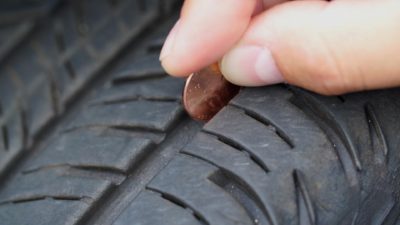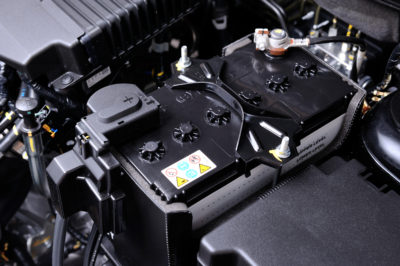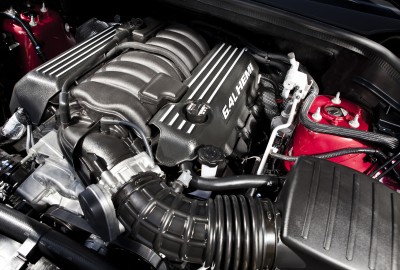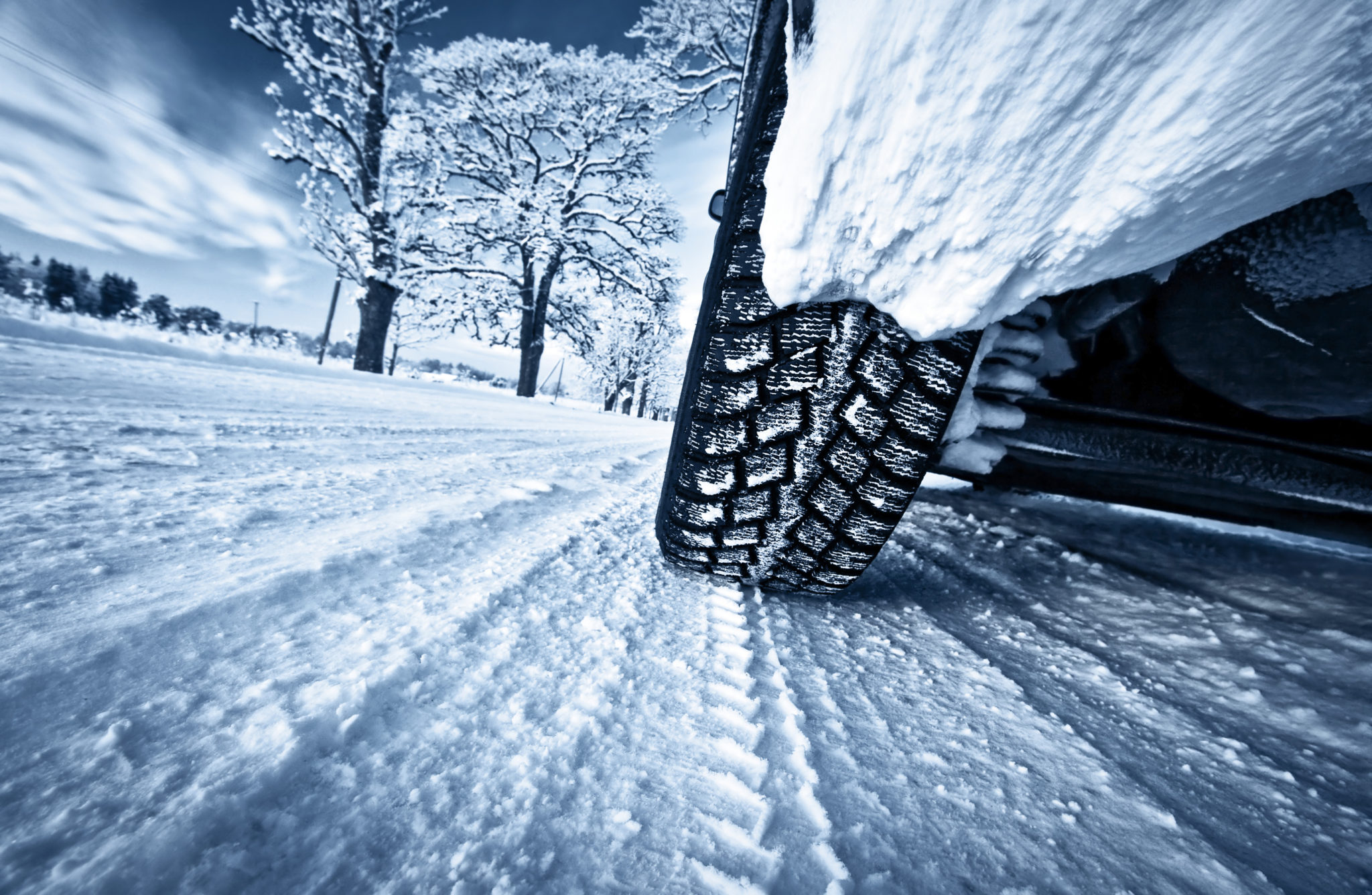The first few days of the new year are a perfect time to look back on where you’ve been and set some goals for what’s ahead. At Gaywheels, we hope that one of your goals for 2018 involves keeping your car in great shape.
To get you started, here’s a list of five easy tips to help ensure your own safety and that of your passengers. They can also keep more money in your pocket and give you extra peace of mind when you’re driving through hazardous winter weather.

1. Check your brakes
Review your vehicle’s service records to determine how long your brakes and tires have been in use. Most brake pad companies and mechanics agree that pads typically last between 30,000 and 70,000 miles, depending on braking habits and composition of the brake pad materials. If you find that you have to replace them, then you can find the brake pads cost here.
- Perform a home brake inspection
- Inspect each wheel for brake pad dust accumulation and disk rotor wear, making a mental note or taking pictures of each wheel.
- Perform a thorough cleaning of each wheel including rims, tires, brake calipers, and rotors. Use a high-pressure system to clean and remove dirt and debris. (I prefer the local self-service car wash for this, since most have heated water systems with dissolving agents, and you’re not left with a dirty driveway to clean-up. However, I know a few people who do it in their driveway then search for a service specializing in Deck Power Washing in Fort Worth or their local area so they can clean up afterward.)
- Perform a second inspection after cleaning, again making a mental note or documenting with pictures. Compare the results to determine if the disc rotors are scored, grooved, pitted, or discolored. Depending on the rim style and braking systems, the cleaned rotors should be fairly accessible. I use my index finger to lightly drag along the rotor surface which should feel smooth from inside to outside. (Remember: only perform tactile tests on clean and cooled rotors, as the surface can be extremely hot after brake use. Also, wash up immediately afterward, as some braking materials can be caustic.)
 2. Check your tires
2. Check your tires
If you drive a typical number of miles–somewhere around 12,000-15,000 miles annually–a tire’s tread will wear out in three to four years, long before the rubber compound does. But if you only drive 6,000 miles a year, or have a car that you only drive on weekends, aging tires could be an issue.
- Perform a tire inspection
- First, buy an air pressure gauge, learn to use it, and keep it in your car. The price of a good air pressure gauge ranges from $5-75. I prefer the dial type, but here is a link to a great guide. Check the air pressure in each tire, and confirm that the cap and valve stem appear free of defects and anomalies. Use the owner’s manual or sticker inside driver’s door to determine the correct pressure, as the P.S.I. listed on the tire is the max pressure rating.
- Perform a tread depth test, either with a tire depth-gauge tool or the coin test. Inspect sidewalls and tread for any damage or exposed cords. Look for nails, screws or other objects that may have punctured the tire and remains embedded. If any problems are found, take the car to your tire professional as soon as possible. Remember: tires are a touch point! They’re literally “where the rubber meets the road”. An under-inflated tire can potentially cause poor gas mileage, reduced tread life, and reduction in control or maneuverability of the vehicle.
 3. Check your battery
3. Check your battery
Colder temperatures reduce your battery’s ability to store or discharge electrical current by as much as 33%. Will your car pass the headlight test in normal conditions? If not chances are it will fail you when needed most. But if you are ever stranded and nobody is around for a jump, try to warm the battery up–it might be enough to get you back on the road. (Just be sure to review the battery-warming process before you need to use it, as it could be very dangerous.)
- Check the voltage or perform a headlight or load test
- Perform a visual inspection, looking for any chemical build-up or case-bulging, and ensure that the mounts are secure and tight. Take it to your trusted shop if there are any issues.
 4. Check your windshield and wipers
4. Check your windshield and wipers
Poor weather and bad road conditions mean that you’re more likely to have rocks flick up and damage your windshield in the winter. So, before you hit the road make sure your windshield doesn’t have any chips because they can be very dangerous when driving. If you notice a spot that needs repairing, just visit www.glass.net and get a quote for a local autoglass repair company.
Also, you need to check your wiper fluids. Most windshield wiper washer fluids are temperature-rated at the factory, but you can make it at home, too
- Ensure that your windshield wiper washer fluid reservoir is full of a washer fluid that is rated for cold weather. Having good windshield washer fluid is a necessity during the winter months as it will not freeze as easily as regular water and will often cut through the de-icing agents used on slippery roads.)
- If your wiper blades are more than two seasons old, it might be time to replace them. Keep the rubber in good condition. I use silicone spray applied to a rag; then after cleaning the rubber blade, I wipe with silicone to seal and protect the rubber. Also try RainX or similar products, which work at a molecular level to decrease snow, ice, and water build-up on your windshield surface.
 5. The Frost/Freeze Warning light (Sometimes called the “snow light”)
5. The Frost/Freeze Warning light (Sometimes called the “snow light”)
- The frost or freeze warning indicator alerts drivers that ice may be present on the road. It typically kicks on when the outside air starts to reach freezing temperatures–around 35° F. Be especially mindful of curves, bridges, over-passes, or any transition area when the road surface changes, like from concrete to asphalt.
If you’ve never performed these inspections on your car, or if it’s been a super long time, don’t get overwhelmed. Just take it one task at a time.
Although no one likes to think about the possibility of being involved in a car accident too much, taking out some of the above precautions can reduce your chances of being injured on the roads. That being said, if ever you are injured in a car accident and you suspect that another driver might be to blame, you might be able to take your case to court in order to file for compensation. To learn more, simply reach out to the top-rated attorney for personal injury law cases in your area.
Looking for more road safety tips? Click on the hyperlinks above and review the procedures, watch the videos, or visit YouTube to find videos that are specific to your vehicle or circumstance. Don’t be afraid to take your smartphone or tablet out to your car and watch the video while performing the task. After a few times, it will become easier than combing out the mats out of your cub’s fur!
An informed vehicle owner will save money and be safer than an uninformed when trouble or crisis arrives. Plus, most mechanics respect engaged owners and might be less inclined to up-sell or use haughty derision. That’s a win-win.

Comments are closed.